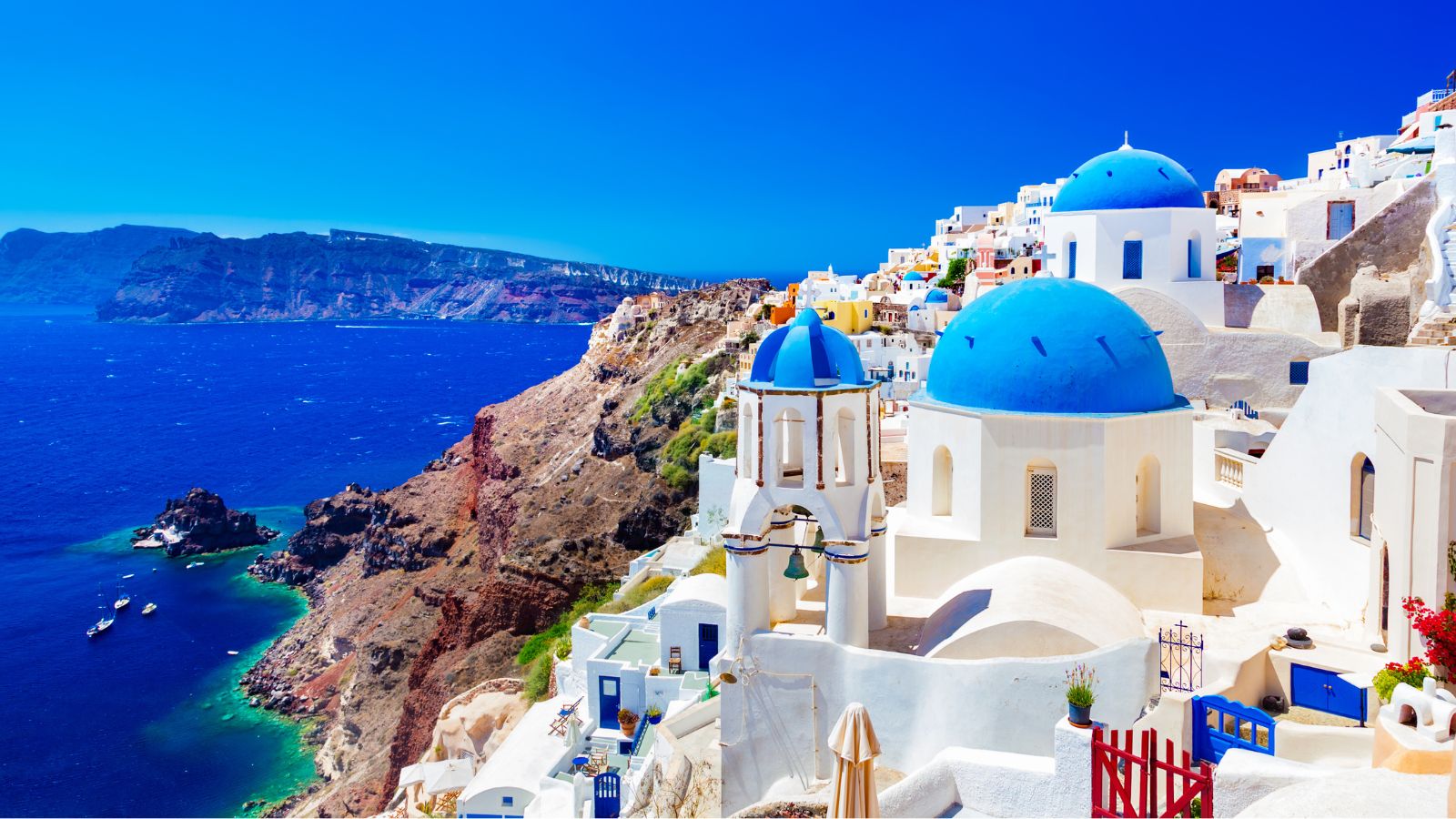The Mediterranean is undoubtedly one of Europe’s most popular tourist destinations, attracting millions of visitors each year to its sandy beaches and historical attractions.
Now that borders have reopened, and airports and airlines have addressed most of the resourcing and aircraft availability issues they faced in 2022, capacity has recovered to pre-pandemic levels in all Mediterranean countries apart from Slovenia.
Spain, France and Italy remain the largest markets in terms of international capacity and Türkiye has continued its upward trajectory. However, the strongest growth has been seen in Albania, increasing by 277% this summer compared with 2013, followed by Greece increasing by 147%, Türkiye by 114% and Croatia by 104%.
Fastest Growing Mediterranean Travel Destinations
To explore this in more detail we looked at holiday destinations in the Mediterranean with over 1 million international seats. The top 15 Mediterranean destinations by growth rate are all in the South East, all with an increase this summer in international seat capacity of over 100% compared with Summer 2013. Seven of the hotspots are Greek destinations, with Santorini (JTR) growing by 366% and its fellow Cycladic island, Mykonos, growing by 250% in the last decade. The European Travel Commission confirmed in early 2023 that Greece is one of the countries American holidaymakers are most likely to travel to in 2023, overtaking Italy and Spain.
Whilst catering to different target markets, the Greek Islands and capital offer a mix of beautiful beaches, historical cultural sites and culinary delights. Similarly over the past few decades Puglia, Southern Italy and Sicily have really exploded in popularity thanks to their unique combination of white sandy beaches, turquoise waters, and whitewashed medieval towns.
The Balkan countries, Albania and Croatia have also proved to be alternative promising sunny destinations, with international capacity to Tirana (TIA), Albania’s capital, growing by 273% over the last 10 years. Tirana, Albania’s modern, quirky capital has recently been proclaimed the European Capital of Youth owing to its reputation as a centre of innovation and entrepreneurship. With its lively social scene and strong café culture, it is a favourite in the digital nomad scene. However, Albania’s greatest strength is its affordability as a Mediterranean destination and its openness to foreigners.
Meanwhile Croatia is the newest country within the borderless Schengen Zone. Zadar is growing at the fastest rate amongst the Croatian destination by 171% vs 2013, 93% of which is served by low cost carriers. The city is a perfect blend of history, food and adventure. It’s one of the oldest continuously inhabited cities in Croatia, set on the sparkling Adriatic Sea and surrounded by nature and worlds apart from Split or Dubrovnik’s cruise ship crowds.
Slowest Growing Mediterranean Travel Destinations
In contrast, the bottom 15 Mediterranean destinations by growth rate, grew by 55% or less compared with Summer 2013. Indeed Girona (GRO) in the Costa Brava Spain declined by 45% over the period. These all represent the more traditional and mature holiday spots within the Mediterranean.
The South Eastern Mediterranean hotspots growing in appeal offer a combination of beautiful beaches, some of which could rival the white sands of the Caribbean, wonders of an ancient world and excellent cuisine. Some destinations, such as Santorini are increasingly targeting the high-end market with luxury hotels set in its signature cave house architecture. Whilst visitors to Puglia are attracted to its magical, enchanted Grotta Palazzese Restaurant, created inside a cave accessed through the cliff top.
Whether it is stunning views or idyllic beaches, it would seem that the Mediterranean visitor is increasingly looking for a special, authentic escape rather than a mainstream holiday and in the case of the newest destinations in the Balkans, at an affordable price. It will be interesting to see whether the soaring temperatures, wildfires and torrential rains experienced by some of these key hotspots this summer will dampen their attraction.






